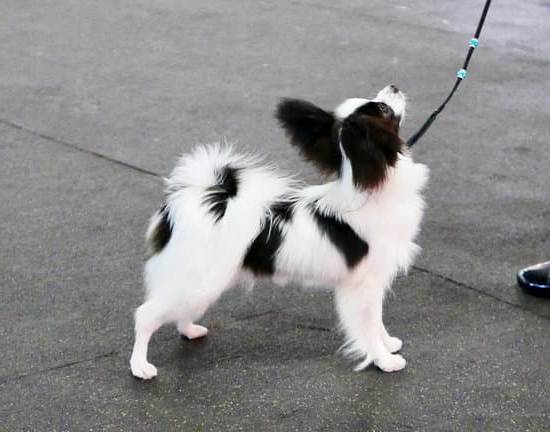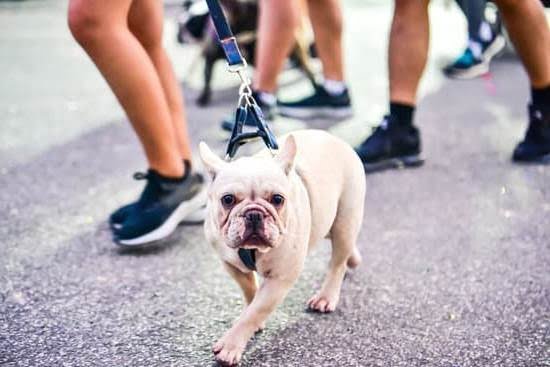Dogs are known for their loyal and sociable nature, but not all pups feel comfortable around new people. In this article, we will explore how to train a dog to be comfortable around people. Understanding canine socialization is key to helping your furry friend overcome fear and anxiety in social situations.
Early socialization plays a significant role in shaping a dog’s behavior towards people. Puppies who are exposed to various environments, sounds, and interactions at a young age are more likely to grow up confident and well-adjusted around strangers. However, even adult dogs can benefit from socialization training to improve their comfort level around unfamiliar faces.
Recognizing the signs of anxiety or fear in your dog when they are around people is crucial. From trembling and panting to avoiding eye contact or displaying aggression, it’s essential to understand your dog’s body language to address their fears effectively. By creating a safe and positive environment for your pup, using desensitization techniques, and implementing positive reinforcement training methods, you can help build trust and confidence in your furry companion.
Importance of Early Socialization for Dogs
Understanding the importance of early socialization for dogs is crucial in ensuring that they grow up to be comfortable and well-adjusted around people. During the critical developmental stages of a puppy’s life, exposure to different environments, stimuli, and interactions with various individuals can significantly shape their behavior and social skills. Proper socialization helps prevent fear, anxiety, and aggression towards strangers, making it easier for your dog to adapt to new situations as they mature.
To train a dog to be comfortable around people, it is essential to start socialization early on in their lives. Introducing your puppy to different types of people, including children, adults, seniors, and individuals wearing hats or uniforms, will help them become familiar with diverse appearances and behaviors. Here are some effective ways to socialize your dog at an early age:
- Take your puppy to obedience classes or puppy playgroups where they can interact with other dogs and people in a controlled environment.
- Expose your puppy to various sounds, smells, and textures within your home and neighborhood.
- Encourage positive encounters with unfamiliar individuals by rewarding calm behavior with treats or praise.
By implementing these early socialization techniques, you can help your dog build confidence and trust in their interactions with different people throughout their lifetime. Remember that patience, consistency, and positive reinforcement are key components in shaping a well-adjusted and sociable canine companion.
Signs of Anxiety or Fear in Dogs Around People
Dogs, like humans, can experience anxiety or fear in certain situations, especially when around unfamiliar people. It is important for dog owners to be able to recognize the signs of anxiety or fear in their pets so that they can address these issues effectively. Here are some common signs that your dog may be feeling anxious or fearful around people:
- Excessive panting or drooling
- Tail tucked between legs
- Ears pinned back
- Whale eye (whites of eyes are visible)
- Yawning or lip licking
- Low growling or barking
If you notice any of these signs in your dog when they are in the presence of people, it is important to address the situation promptly and appropriately. Ignoring these signs can lead to heightened anxiety in your dog and may result in aggressive behavior. Understanding these signals will help you in training your dog to be comfortable around people.
Creating a safe and positive environment for your dog is key to helping them overcome their fear or anxiety around people. This includes setting up spaces where your dog feels secure and using positive reinforcement techniques when introducing them to new individuals. Additionally, providing mental and physical stimulation through activities like walks, games, and interactive toys can help alleviate stress and build confidence in your pet.
Desensitization Techniques for Dogs With Fear or Anxiety
Desensitization is a technique commonly used to help dogs overcome their fears and anxieties by gradually exposing them to triggering stimuli in a controlled manner. When using desensitization techniques with your dog who is uncomfortable around people, it is essential to start at a level where they feel comfortable and slowly increase exposure over time. This method helps your pet learn that being around people is not a threat and can help them build trust and confidence in social situations.
Creating a Safe and Positive Environment for Your Dog
Understanding Your Dog’s Triggers
One of the first steps in helping your dog be comfortable around people is to identify their triggers. Observe your dog’s behavior when they are around new people or in certain social situations. Do they show signs of stress, fear, or anxiety? Understanding what triggers these negative emotions in your dog can help you address them effectively.
Establishing a Safe Space
Creating a safe space for your dog where they feel secure and relaxed is essential in helping them overcome their fear or anxiety. This could be a designated area in your home where they can retreat to when they feel overwhelmed, such as a quiet corner with their bed and favorite toys. Make sure this space is off-limits to visitors to give your dog a sense of control over their environment.
Consistency and Routine
Dogs thrive on routine and predictability, so establishing consistent daily routines can help reduce their anxiety around people. Stick to regular feeding schedules, exercise routines, and bedtime rituals to provide structure for your dog. Consistency will help them feel secure and stable, making it easier for them to adapt to new situations and interactions with people.
By creating a safe and positive environment for your dog, you are setting the foundation for successful training on how to train a dog to be comfortable around people. Remember that every dog is different, so it may take time and patience to help your furry friend overcome their fears. With dedication, love, and the right training techniques, you can help your dog feel more at ease in social settings.
Desensitization Techniques for Dogs With Fear or Anxiety
Desensitization techniques can be highly effective in helping dogs with fear or anxiety become more comfortable around people. These methods involve gradually exposing the dog to the trigger that causes anxiety, in this case, being around new people, in a controlled and positive way. By doing so, you can help your dog overcome their fear and build confidence when interacting with others.
Slow and Steady Exposure
One desensitization technique involves slowly exposing your dog to new people in a gradual manner. Start by having friends or family members they are already familiar with visit your home. Allow your dog to observe them from a distance and reward calm behavior with treats or praise. Over time, decrease the distance between your dog and the visitors until they are comfortable enough to approach or be approached by them.
Positive Associations
It is crucial to create positive associations for your dog when they are around new people. Use high-value treats or toys as rewards whenever they show signs of relaxation or interest in meeting someone new. By associating meeting new people with something enjoyable for the dog, you can help change their negative perception into a positive one over time.
Consistency and Patience
Consistency is key when it comes to desensitizing a dog with fear or anxiety around people. It is important to practice these exercises regularly but also be patient with your furry friend’s progress. Each dog is unique, and it may take time for them to feel completely comfortable around strangers. Remember that training takes time and dedication, but with patience and perseverance, you can help your dog become more at ease in social situations.
Building Trust and Confidence in Your Dog
When it comes to training a dog to be comfortable around people, building trust and confidence in your furry friend is crucial. Dogs that lack trust or are fearful may exhibit undesirable behaviors when interacting with new individuals. To help your dog feel more secure and at ease, start by creating a safe and positive environment at home. This includes providing a consistent routine, adequate exercise, and a comfortable space where your dog can retreat if feeling overwhelmed.
One effective way to build trust with your dog is through positive reinforcement training methods. By rewarding good behavior with treats, praise, or playtime, you can help instill confidence in your pet and strengthen the bond between you. It’s important to be patient and consistent in your training efforts, as building trust takes time. Avoid using punishment or harsh methods, as this can lead to further fear or anxiety in your dog.
In addition to training exercises, gradually exposing your dog to new people in a controlled setting can also help boost their confidence. Start with familiar faces or calm individuals before introducing them to strangers. Pay attention to your dog’s body language during these interactions – watch for signs of anxiety or discomfort such as lip licking, yawning, or avoiding eye contact. If you notice any negative reactions, give your dog space and try again later at a slower pace.
| Positive Reinforcement | Exposing Dog to New People |
|---|---|
| Reward good behavior with treats | Gradually introduce familiar faces first |
| Praise and playtime for confident responses | Observe body language for signs of discomfort |
Socialization Exercises for Dogs to Meet New People
When training a dog to be comfortable around people, socialization exercises play a crucial role in helping your furry companion feel at ease in various situations. These exercises involve exposing your dog to different individuals in a controlled and positive manner, ultimately helping them build confidence and trust in new faces. By following the right techniques, you can help your dog overcome their fear or anxiety around people and create a more harmonious relationship.
One effective way to start socialization exercises is by introducing your dog to individuals of different ages, genders, and ethnicities. This variety will help your dog become accustomed to a diverse range of people and avoid developing fear or anxiety towards specific groups.
Additionally, make sure these encounters are pleasant for your dog by providing treats, toys, or praise as rewards for calm behavior around new individuals. Positive reinforcement is key in shaping your dog’s perception of meeting new people as a positive experience.
It’s important to gradually increase the level of interaction as your dog becomes more comfortable with meeting new people. Begin by having strangers toss treats from a distance before moving on to allowing them to approach and pet your dog gently.
Always monitor your dog’s body language during these interactions and be prepared to intervene if signs of anxiety or fear arise. Consistency and patience are essential when implementing socialization exercises, as every small step towards progress counts towards helping your dog develop confidence around people.
Positive Reinforcement Training Methods for Anxiety-Prone Dogs
Positive reinforcement training methods can be highly effective in helping anxiety-prone dogs become comfortable around people. This approach involves rewarding your dog with treats, praise, or toys for exhibiting calm and relaxed behavior when interacting with individuals. By reinforcing positive behaviors, you can help your dog associate people with positive experiences, ultimately reducing their fear or anxiety.
One effective technique is to start by having a trusted friend or family member approach your dog calmly and slowly. As soon as your dog shows signs of relaxation, such as wagging their tail or approaching the person without hesitation, reward them with a treat and praise. Gradually increase the duration and intensity of these interactions while continuing to provide positive reinforcement for good behavior.
Consistency is key when using positive reinforcement training methods. Make sure to practice regularly and in various environments to help your dog generalize their newfound comfort around people. With patience, persistence, and the use of positive reinforcement, you can help your anxiety-prone dog build confidence and trust in human interactions.
Seeking Professional Help for Severe Fear or Anxiety Issues
In conclusion, training a dog to be comfortable around people is a process that requires patience, understanding, and consistency. By comprehending canine socialization and the significance of early socialization for dogs, pet owners can better address any signs of anxiety or fear in their furry companions when around unfamiliar individuals. Creating a safe and positive environment plays a crucial role in helping dogs feel secure and at ease, while desensitization techniques can gradually help them overcome their fears.
Building trust and confidence in your dog is key to successful socialization, as it allows them to feel more comfortable in various situations. Socialization exercises that gradually introduce new people to your dog in a controlled manner can help them become more familiar with different individuals and reduce their anxiety levels over time. Positive reinforcement training methods can also be highly effective in helping anxiety-prone dogs associate people with positive experiences, further boosting their comfort levels around strangers.
If despite your best efforts your dog continues to exhibit severe fear or anxiety around people, seeking professional help from a certified trainer or animal behaviorist may be necessary. These experts have the knowledge and experience to assess your dog’s specific needs and provide tailored solutions to address their issues effectively. With the right guidance and support, even the most anxious dogs can learn to be comfortable around people and enjoy positive interactions with others.
Frequently Asked Questions
How Do I Make My Dog Comfortable With People?
Making your dog comfortable with people involves gradual exposure and positive reinforcement. Start by introducing your dog to a few calm individuals at a time, using treats and praise to create positive associations. Allow your dog to approach new people at their own pace, avoiding overwhelming situations that may trigger fear or anxiety.
How Do I Train My Dog to Be Around People?
Training your dog to be around people requires patience and consistency. Begin by teaching basic obedience commands like sit, stay, and come, reinforcing these behaviors with rewards when in the presence of different individuals. Use desensitization techniques by gradually exposing your dog to various social situations while offering positive reinforcement for good behavior.
How Do I Stop My Dog From Being Nervous Around Strangers?
To help your dog overcome nervousness around strangers, it’s important to build their confidence through training and socialization. Create positive experiences by rewarding calm behavior when encountering new people and environments.
Establish boundaries to protect your dog’s comfort zone while slowly increasing exposure to strangers over time. Consistency, patience, and understanding are key in helping your dog feel more at ease around unfamiliar individuals.

Welcome to the blog! I am a professional dog trainer and have been working with dogs for many years. In this blog, I will be discussing various topics related to dog training, including tips, tricks, and advice. I hope you find this information helpful and informative. Thanks for reading!





